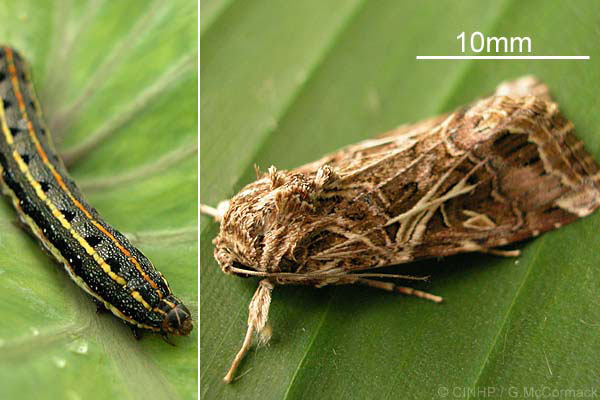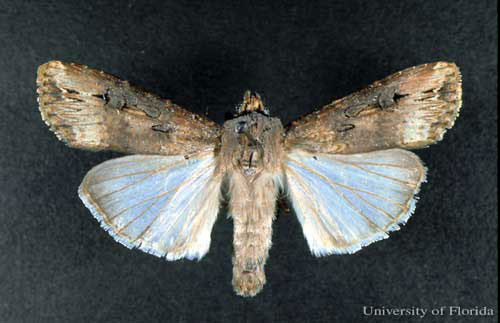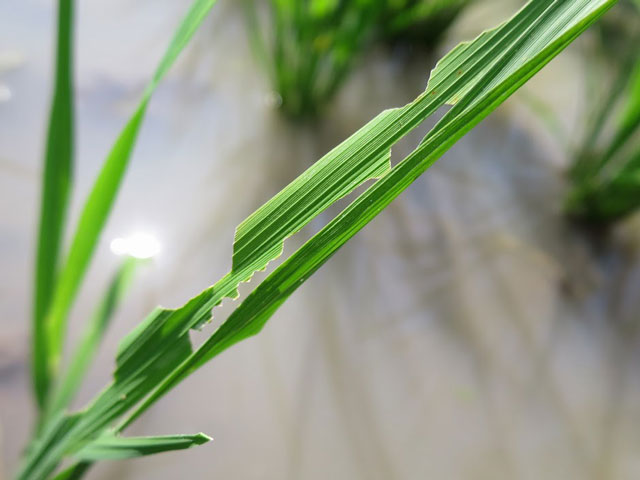Cutworm
 Cutworm mature larva (Photo by G McCormack, CINHP)Spodoptera litura (Fabricius)
Cutworm mature larva (Photo by G McCormack, CINHP)Spodoptera litura (Fabricius)
What it does
Young caterpillars of cutworm eat the soft leaves of the rice plants. Fully grown cutworms can consume the entire plant.
Why and where it occurs
Monsoonal rains favor the development of cutworms. Likewise, the presence of alternate hosts contributes to the insect’s abundance.
Outbreaks of the pest often occur after periods of prolonged drought followed by heavy rains. The insect occurs in all types of rice environments during the vegetative stages.
The adult moths are nocturnal and highly attracted to light traps. During the day, they hide at the bases of rice plants and grassy weeds.
The eggs usually hatch in the early hours of the morning. Neonate larvae feed on the leaf tips or from the base of the leaf toward the apical area. At daytime, the larvae are found under leaf litter in the ground in dryland fields. In wetland environments, the larvae usually stay on plants above the water surface.
How to identify
To identify cutworm damage, check for
- cut seedlings at bases
- skeletonized leaf surfaces
- consumed whole rice plants
The defoliation or feeding damage caused by cutworms can be confused with other defoliators or leaf-feeding insects. To confirm cause of damage, check rice plant for presence of eggs and feeding larvae. Visually inspect for presence of cut seedlings and eaten leaves.
Why is it important
The cutworm feeding damage may become serious during the seedling stage, especially in upland rice.
How to manage
Keeping fields flooded may keep the population of this pest at low levels.
Biological control agents of cutworm are very abundant. For example, scelionid and braconid wasps are egg parasitods and grasshoppers are predators of the pest. Fungal and polyhedrosis viruses are pathogens that attack this insect pest.
Insecticides like pyrethroids, may be needed when larval populations are extremely high. As pyrethroids can also cause secondary pests, spot spraying only at high population densities may be advisable.









